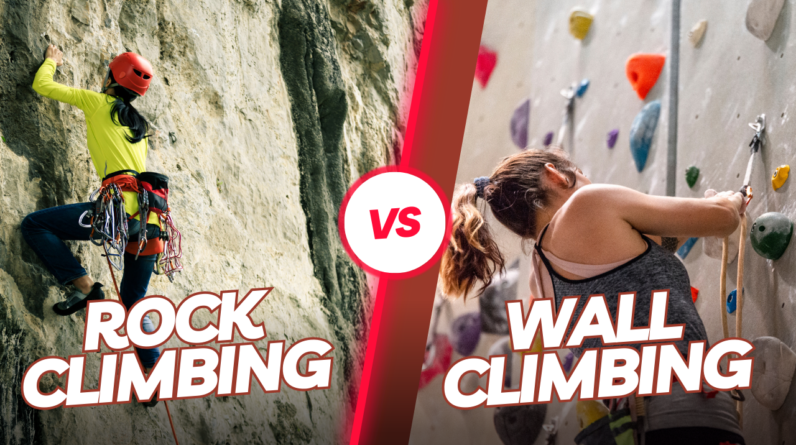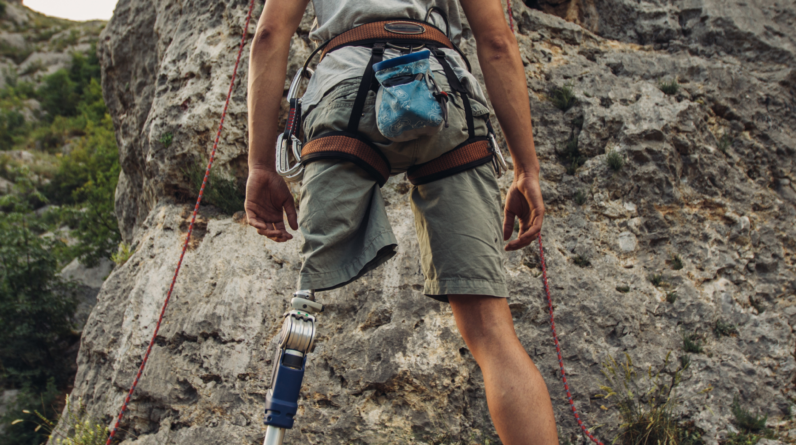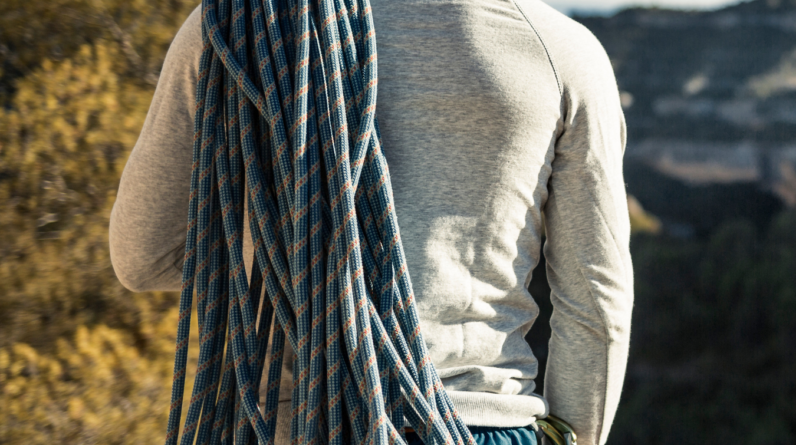
Choosing the Right Climbing Rope Diameter

Whether you’re a newbie or an experienced climber, you need to know the right diameter of climbing rope for your climbing needs. In this article, we’ll explain how to find the right rope for you. You’ll learn how to select the right diameter and what size rope to buy.
climbing rope diameter
Choosing the right climbing rope diameter is essential for safety and durability. This will depend on the type of climb you are going to be doing. You can choose from a wide variety of different diameters, so make sure you choose the best for your needs.
The main thing to remember when choosing a rope is that you don’t want to be using one that is too thick. This will add extra weight and take extra effort to move up the wall. Thicker ropes will stand up better to frequent use and will be safer around sharp edges.
Another thing to consider is the impact force of a rope. This is the force in kilo-newtons (kN) that the climber experiences when they fall. This force increases as the fall gets sustained. This force is measured during the UIAA rope test.
The impact force of a rope depends on the size of the rope and the distance the rope stretches when the climber falls. The lower the impact force, the less force the climber will feel.
Static elongation is also important. Static ropes are good for hauling loads and rescue work. Static ropes have a diameter between 9-13mm. They are also commonly measured in inches.
Half ropes are often used in sports climbing, trad climbing and lead climbing. Half ropes are normally 8mm-9mm in diameter. They are lighter than twin ropes.
Twin ropes are usually around 7-8mm in diameter. These ropes are lighter than half ropes, but require better control. The advantage of twin ropes is that they are more durable and can be used in pairs.
Choosing the right diameter for your climbing goals will help you make the most of your time on the mountain. This can also help you avoid injury.
climbing rope sizes
Choosing the right diameter for your climbing rope is vital. The diameter can tell you how the rope will perform during your climb. It can also give you an idea of how light or heavy the rope is. This can help you determine whether you will need a thicker or thinner rope.
Most people start out with a thicker rope. This is because they find it easier to carry and handle. The thicker the rope, the more durable it will be. However, if you are climbing regularly, you may want to choose a thinner rope to save weight. Thinner ropes also run through belay devices faster.
Thinner ropes are also lighter, but they require more practice to master. They also tend to be less durable.
UIAA certification tests use a very severe test to determine the proper diameter for your rope. The test measures dynamic and static elongation. The dynamic elongation is the amount of rope that stretches during the first fall. It is also inversely related to the static elongation. Dynamic ropes tend to stretch up to 40%. However, this can be excessive.
UIAA certification tests also use a very high impact force to test the performance of the rope. These tests are often far higher than the forces experienced by the average climber.
The impact force is a measurement of the force of falling weight, measured in kilonewtons. UIAA certification tests are far from a representative of real world forces.
A good rule of thumb is to choose a rope with a diameter that is twice the length of the route. This is especially true for multi-pitch rock routes. Some pitches can be 35-40 meters long. However, you may need a rope longer than that.
how to choose a climbing rope
Whether you’re a beginner or a seasoned climber, you’ll need to choose a climbing rope with durability in mind. Choosing a good rope is easy to do when you know what features to look for.
Choosing the right rope can make a difference between enjoying your sport and ending up in a grumpy heap. There are three main factors to consider when picking a rope: diameter, length, and weight. These features all affect the way you use the rope and how long it lasts.
The diameter of your rope will determine how much you’ll be able to carry and how long it will last. It’s also important to know how thick the rope is. The thicker the rope, the more abrasion-resistant it will be. Thicker ropes also provide extra security.
Another feature that you should consider when choosing a climbing rope is its fall rating. This is a measure of how many falls the rope can endure before breaking. Typically, you can expect a rope to last about 50 falls before it breaks. The higher the fall rating, the thicker the rope and the stronger the construction.
If you’re thinking of buying a rope, be sure it’s UIAA certified. This is an international mountaineering federation that rates and certifies ropes based on safety standards. UIAA certification tests are very thorough. They routinely produce forces on ropes that are well above what you’d expect in real life.
The standard rope has markings on each end. These markings can tell you about the diameter, the fall rating, and the static elongation.
The UIAA also measures a number of other features of the rope. This includes the dynamic elongation and the impact force.
climbing ropes and gear
Buying a climbing rope can be a confusing task, with many different diameters, styles and features to choose from. Whether you’re an advanced climber or a beginner, it’s important to know what you’re looking for from a rope. Here are some of the most important features to consider.
Impact Force is a measure of how well the rope absorbs energy. The UIAA test can give a force rating of up to 12kN. But the human body doesn’t like that much force. So a lower impact force is preferable.
A climbing rope that has a large static elongation will help you to get to the ground. It also means less force on your gear. Static elongation is also important for working lead routes.
A rope with a large static elongation might hit the ground in a blaze of glory, but it can also be dangerous. It’s best to let a rope rest for at least five minutes after a fall. This allows the rope to stretch out and absorb more energy.
Similarly, a rope with a large dynamic elongation can be dangerous. It can get stuck on a ledge or hit a wall. It’s also difficult to brake with skinny ends. So, a rope with a good balance between durability and performance is usually a good choice.
Another feature to consider is the sheath percentage. A good sheath will be thick and abrasion resistant. The sheath will also help protect the core of the rope from abrasion. A sheath can also have a special dry treatment to make it safer in wet conditions.
The UIAA has also developed a standard dry treatment for the highest performing ropes. These ropes can absorb as much as 40% of dry weight, but it comes at a cost.
what length climbing rope should i get
Choosing a climbing rope is a crucial part of the safety system for a climber. There are several factors to consider, including diameter, length, and durability. If you are unsure of the features that are most important to you, talk to other climbers and find out what they use.
Generally, thicker ropes are easier to handle, more durable, and lighter. They are also a safer choice for repeated falls. In addition, they are often preferred by beginner climbers because they give them the most bang for their buck. But they also take up more space in your pack.
Skinny ropes are used in multi-pitch scenarios. They create less friction when sliding through gear. They also clip more easily. They are used mainly in alpine climbing. But they also have a reputation for being less durable.
The best diameter for a lead climbing rope is 8-9mm. Thinner ropes have similar fall number ratings as thicker ropes. They are also preferred by lead climbers because they are easier to use.
Most dynamic ropes have 30-40% dynamic elongation. This means that the rope will stretch during a fall, which will put less stress on the climber. The UIAA, however, sets the maximum level at 40 percent.
The impact force of a climbing rope is a measure of the force the rope will exert on the climber during a UIAA test fall. The UIAA tests ropes by using an 80 kg weight. It then falls on the climber from a height of 1.77 factor. The impact force is measured in kilonewtons (kN). The lower the impact force, the lower the impact on the climber.
Dynamic climbing ropes are available in many different diameters. They come with information on UIAA safety standards and static elongation.
What Diameter Is Climbing Rope?

It is crucial to choose the correct diameter climbing rope. The diameter will determine how well your rope is able to absorb the energy from falling. The weight of your climbing equipment will have an impact on the rope. A heavier rope will wear down much faster.
Generally, a rope with a diameter of 9-10mm is ideal for most climbing. The most durable ropes are also made from this size.
There are two main types of climbing ropes: dynamic and static. Dynamic ropes have more elongation and are designed to absorb the energy of falling. They are also the lightest ropes available. They are ideal for top-rope climbing and mixed climbing. You can use them to rappel. However, they are not ideal for lead climbing.
Most static ropes can be used for single-pitch, fixed-line climbing, jugging and hauling. They are also used for sport climbing, lead climbing, and trad climbing. These are used in ROTC programs by the US Marine Corps and in gym wrestling.
Outdoor climbers most commonly use 60 to 70 metre ropes. Many crags offer ropes up to 70 metres. These ropes are useful for top-roping, and longer sport routes. They are also ideal for alpine climbing.
It is also important to take into account the weight. You will also want to consider the amount of static elongation the rope has. This is the most important feature of a rope.
Choosing the Right Diameter of Rope for Climbing

Choosing the right diameter of rope is crucial to your success. This is a significant investment and it is worth taking the time to make the right choice. It is important to understand what you will use it for and how.
The best diameter for a climbing rope is determined by many factors. Your skill level and intended use are the first factors. A thinner rope might be better suited for long, multi-pitch routes. On the other hand, if you are sport climbing, you may want a thicker rope, which is more durable.
Your rope’s weight is also important. A heavier rope is more difficult to carry and will require you to exert more effort. Thicker ropes will also take up more space in your bag, so they will last longer.
Another important factor is the impact force. The impact force is the amount of force in kilonewtons that the rope can withstand during a fall. This is the UIAA standard fall test. The rope can withstand up 40 percent of its length. The higher the impact force, the more likely you are to hit the deck. Choosing the right rope is important for protecting you from an injury if you fall.
It is important to consider both the static and dynamic lengths of the rope. The rope’s static elongation refers to the amount of stretch it can withstand with a constant 80 kg force. A thinner rope will have a higher static elongation.
Choosing the Right Thickness of Climbing Rope

It is important to choose the correct thickness for climbing rope. A thicker rope is more durable and has more friction. However, thinner ropes are easier to handle and take up less space in a pack.
It is important that you consider what type of climbing you’d like to do before you decide on a rope. If you climb on a regular basis, you should expect to change your rope every year or two. The length of your rope also plays a role. A shorter rope is less bulky and can be used for multi-pitch climbing. Top-roping is easier with a longer rope.
The thickness of your rope is also influenced by its fall rating. Higher fall ratings indicate a rope that is stronger and can withstand more falls. This will ensure that the rope will last longer.
Climbing ropes that have been certified by the UIAA are tested for their ability to withstand a lot of falls. However, these tests are not reflective of real-world forces.
Although thinner ropes may be lighter than thicker ones, they last less. These ropes are less tolerant of abrasion. When they come in contact with hard rock and repeated leads falls, they can become weaker faster.
The diameter of your rope is also an important factor. A thinner rope will have less friction when sliding through gear and belay devices. You will find it easier to climb the wall.
You can also decide whether you want a single rope or a double rope. A single rope is the most popular climbing rope. They are usually 9-10 mm wide. A double rope is generally heavier, but can be a workhorse in certain situations.
What Size Rock Climbing Rope is Good For Beginners?

Different ropes are designed for different purposes. This means there’s no single “best” rope. The best rope for you will depend on your climbing style, climbing goals, and where you plan to climb.
When you’re starting out, it’s best to start with a thicker rope. These ropes tend to be more durable and easier to handle. These ropes inspire confidence. In addition, thicker ropes can handle more abuse. This makes them safer for repeated falls.
Thinner ropes may be an option. They’re popular in alpine and multi-pitch scenarios. They are more flexible than those with fatter lines, and they require greater care while belaying. They’re also less forgiving of abrasion. They tend to be lighter than thicker ropes, but they’re still plenty strong.
The ropes that are thicker than the skinny ones tend to be heavier. This means that they take up more room in your backpack. These ropes are also more heavy, making them not ideal for many climbers. That being said, thicker ropes can be a great option if you’re new to climbing and you don’t plan on being a professional climber anytime soon.
Skinny ropes also offer substantial weight savings. Although they are lighter than heavier lines, their durability is less common. They are not recommended for lead climbers and experienced belayers.
A 9.5-to 9.8-millimeter climbing rope would also be a great option. They are strong enough to be used for toproping at local crags, yet light enough that they can also be taken on mountain trips. These ropes are great for gym training.






